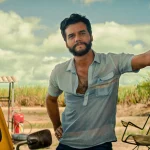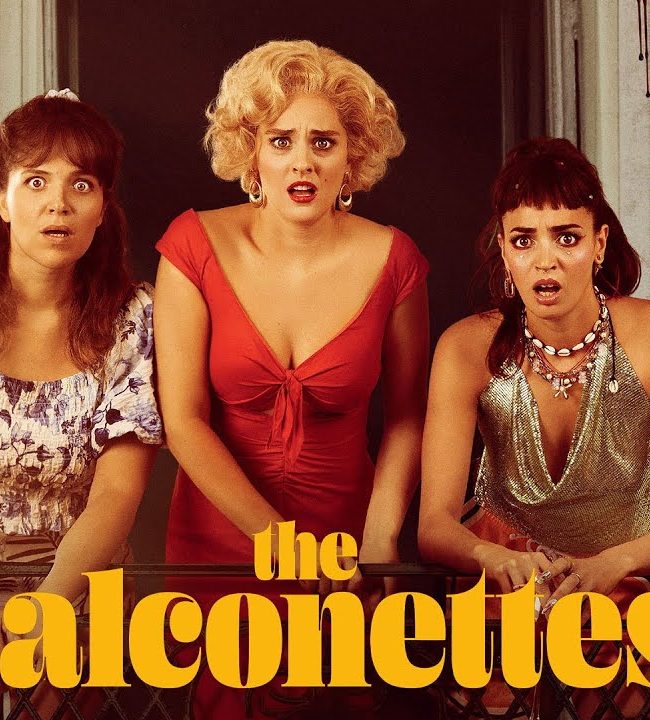A Conversation with Emily Mkrtichian (THERE WAS, THERE WAS NOT)
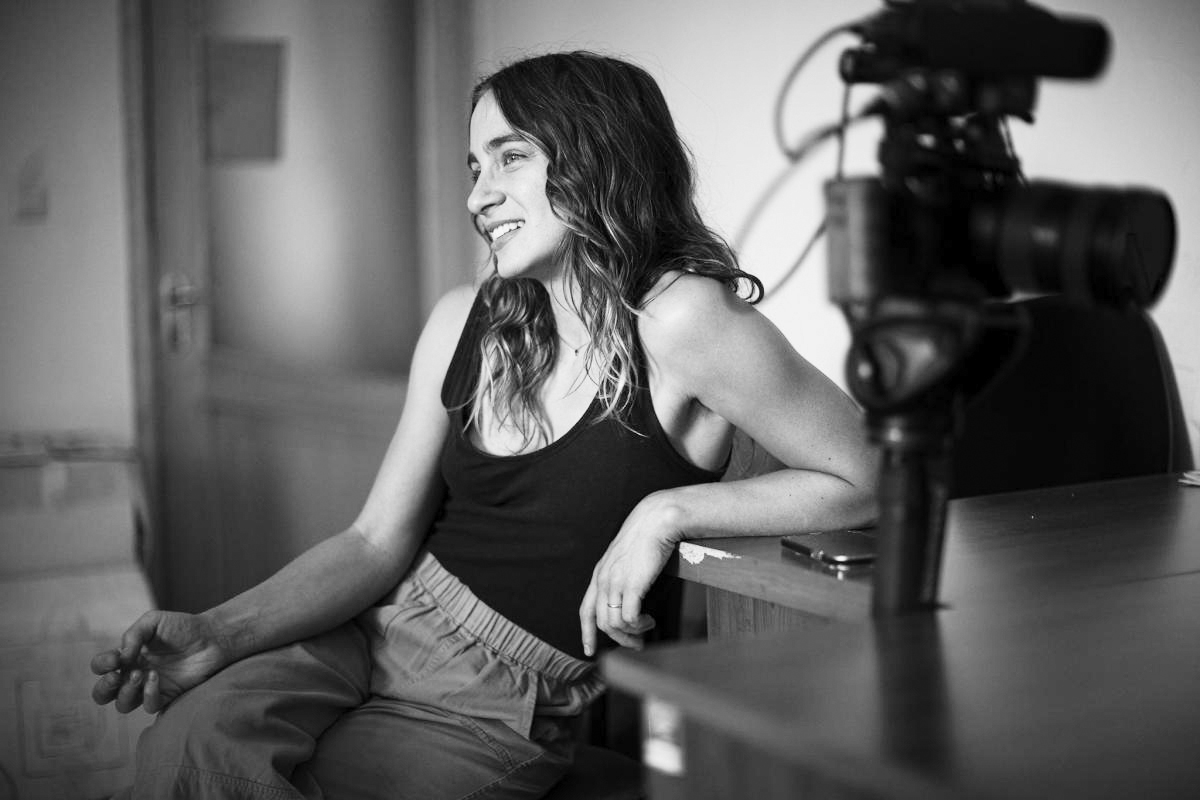
It may be incongruous to characterize a film about war and destruction as “gentle,” or a film of loss and ethnic cleaning as “tender,” but Emily Mkrtichian’s debut feature There Was, There Was Not is a film that continuously breaks the bounds of its own creation.
In 2015, Mkrtichian set out to film the uniquely impressive lives of four women in the Republic of Artsakh (also known as Nagorno-Karabakh), an unrecognized country with an ethnically Armenian population.
Under the U.S.S.R., Artsakh was placed under the administration of Azerbaijan. After the dissolution of the Soviet Union, Artsakh’s fought for self-determination in the first Nagorno-Karabakh War, from which it gained independence in 1991. Inspired by the lives women re-build, lead, and nurture in the continuous space of post-conflict society, Mkrtichian casts a feminist light on the varying ways strength is presented in times of change.
There Was, There Was Not brings audiences into the homes and day-to-day lives of these remarkable women: Gayane, a community and feminist leader with a rich past in the ongoing fight for women’s rights in Artsakh; Siranush, a bright, hopeful political candidate advocating for women’s representation in politics and Artsakh’s recognition; Sveta, a de-miner aptly attempting to rid Artsakh of the violence embedded in in its land; and Sosé, a Judo champion who seems to represent the very soul of Artsakh – a deep sense of loyalty and compassion for community, driven by a fierce and unyielding fight.
What began as a chronicle of these women took an alarming turn as Azerbaijan launched an attack on Artsakh in 2020, resulting in a 44 day war and a completely different film for Mkrtichian. Transforming from a subtle presence behind the camera to both a protector and caretaker in a time of war, Mkrtichian becomes a central character among these courageous women, showing bravery in the face of unexpected tragedy.
There Was, There Was Not manages to walk on a long and winding tightrope, acting simultaneously as a personal essay, war documentary, and artifact of a now lost land. Mkrtichian balances the longing for pre-conflict society with the reckoning of existing problems this society may have have; the acknowledgement of how criticism of one’s home is perhaps the purest form of love; and an understanding of how existence persists in storytelling.
Hammer to Nail: I understand that There Was, There Was Not went through a few different iterations. It became a war documentary out of a film about four incredible women, but even before that, the film arose from a short film you were working on about a group of women removing landmines in Artsakh. We see a glimpse of this in the final film, but how did it transform from that short into the final film?
Emily Mkrtichian: In 2014 I made a short film about the first group of women who were allowed to become deminers in Artsakh – who remove landmines leftover from the war – and there I met Sveta. She was this model of all the work that women were stepping up to do, but not really being recognized for. And it got me interested in a larger story of this place, Artsakh, an unrecognized territory with a liminal status, so I started spending more and more time there. Then a lot of coincidental, organic things happened. I met both Siranush and Gayane through mutual friends who were just like, “Oh, you’re spending a lot of time in Artsakh. I think you would really be interested in this person. They’re very vocal, they’re doing something that I think is really important.” So I had conversations with both of them to explain what I was doing. And then I was teaching a filmmaking workshop for high school students in Stepanakert, which was the capital of Artsakh. The idea was all of the groups of students would find a woman in their community to tell a story about. One of the groups was like, “There’s this judo champion, she’s national hero, and she’s so interesting. We really want to make a story about her!” And so we all went together with cameras to meet Sosé, and I was like, oh, of course. She’s this crazy mix of childlike joy and adult strength.
HtN: The film then once again changed shape as war between Azerbaijan and Artsakh broke out. But this was, of course, an unpredicted and unintentional shift. Can you take me through where you were when war broke out, who you were with, and what was going through your mind?
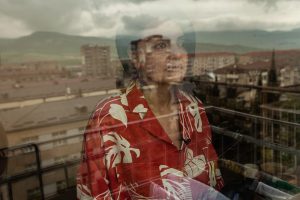
A still from THERE WAS, THERE WAS NOT
E.M.: When I went to Artsakh, I had spent about six weeks with the women there. I was at what I thought would be a natural ending point in that observational film that I was making. So I had left Artsakh to Yerevan, Armenia, where I was planning to fly [back to the United States] from, but the day before I was supposed to leave, I woke up in the morning, and it was just all over the news: all of the borders of Artsakh and civilian areas had been simultaneously bombed. I had actually been with Sosé in Yerevan because she was getting a spinal surgery and it was supposed to happen that day. I called her, and she said, “I’m already on my way back to Artsakh. I’m not getting the surgery. I’m gone.” And I was like, oh my god, okay. I called Siranush, who told me, “I’m in the main square, I’m at the parliament building, and there are drones flying over my head.” So immediately I was like, okay, I have to go. That day, I left with a few local Armenian journalists who also wanted to document what was going on. We didn’t know if we’d get over the border, we didn’t know if we could get into the cities, but we all left and managed to make it to Artsakh. When we got there, it was late, and I’ll never forget this, all of the lights were off. Everyone had turned off all of their lights because they didn’t want to be a target. So it looked as if there was like a blackout all over the city, and I spent my first night in a bomb shelter.
HtN: Films, of course, take years of preparation. Given that you were not prepared to go into a war film, how did handle this sudden change, both as a filmmaker, but also simply as a person living through the unimaginable?
E.M.: There’s this whole world of safety protocols for people who document this kind of conflict, and I did not have any training in conflict journalism or war zones. But I had a friend who was a conflict journalist who gave me so much support and was working on getting press vests and helmets into the region. And then, coincidentally, the second day of the war, I woke up after that first night and I had received the support of the Sundance Institute for my film, which was surreal. At the time, Carrie Lozano was the head of the Institute, and had been a journalist for years and years, so they also provided a lot of support.
I felt privileged enough to be there and have a camera, and for these women to have already spent four years building trust with me and being open to me documenting them. All around me were these international journalists who were dropping in for a few days to report on the conflict for the rest of the world, and I really understood that my work was to do the opposite. They could only get a few days of information, but I had this longform wealth of relationships and context. I wasn’t running towards bombs and all of the explosions and documenting that, I was running towards these women and really trying to keep a camera steady on what their emotional journeys were during this time.
HtN: It’s incredibly jarring watching in real time as windows get blown out of buildings and houses crumble before the camera. How did you understand your responsibility as a documentarian to preserve people and sites in a time of war, especially since this was not your original intention with the film.
E.M.: I immediately get a little teary when you say that, because I know that feeling so well – and it’s a feeling I hope people don’t have to experience in their lifetimes. I think the answer to your question is twofold. In the wake of the war, before the ethnic cleansing, there was a navigation and negotiation of how you tell a story about something so devastating. If nonfiction is a representation of the real world, how do I represent what happened to these four women when I, myself, am struggling to believe that it’s possible? In the film, you can kind of feel that struggle of what is an ethical way to do this? How do I craft a compelling story that gives justice to these real, lived experiences? And then, in the wake of the ethnic cleansing of 2023, it became very clear that every image I had taken in this place belonged to a finite archive. We’re never going to be able to add to that again. These images are kind of all we have left as a point of access to a place that we can no longer access. So that made me think a lot about what it means to create an archive, to be an archivist, to be a curator of images, and to be a storyteller who has this responsibility of transmitting the story of us and how we live to future generations. This was even more potent because I was pregnant while editing and had my first kid right after the premiere of the film, so I was thinking a lot about transmission in terms of what I’m transmitting to them over generations and what stories they’ll have to tell as well.
HtN: This moment the war starts is of course a turning point on multiple levels. But prior to this moment, the idea of conflict was something that was real, of course, but had somewhat of a distance to it. The film opens with a voiceover of you describing how you learned of your Armenian heritage, including the genocide, through listening to stories. Even when other characters show photos of the previous war between Artsakh and Azerbaijan (the first Nagorno-Karabakh War), there is both the distance of time as well as the distance of looking at war through a photograph. This all makes the reality of the second Nagorno-Karabakh War even more sudden. With this in mind, can you speak about the importance of storytelling regardless of one’s “distance” to conflict?
E.M.: Coming from a lineage and a family that was displaced from their lands, that was something that was always communicated to me through story, but it wasn’t until I was older that I realized these stories have deeper meaning. They’re information that can become really pertinent to survival if you happen to find yourself in one of these unbelievable situations that my grandmothers, aunts, great aunts found themselves in. As a kid growing up in the US at a distance from any of these types of things, they didn’t feel very real. I appreciated it and it made me obsessed with the craft of storytelling, but I didn’t ever consider them to be something that might be pertinent to my life or my survival, or that of my children. I talk about Artsakh as a place that kind of knew subconsciously that it was in danger; there was no illusion that something bad could happen here one day, because it had recently happened. So the distance between the people there and the knowledge of what could happen was much less than the distance between myself and the history of a genocide two generations ago. There was something about being there that made it feel more real. When the war broke out, it really felt like something in my DNA turned on, like there was some information that became available to me that I didn’t know was there, but that was also a key to my survival. I really credit the stories and the embodied memory of my grandparents and my aunts.
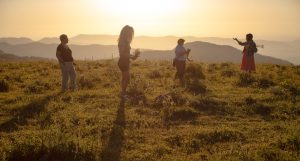
A still from THERE WAS, THERE WAS NOT
Right now, on our cell phones, we’re super distanced, though we feel like we understand what conflict is because we’re seeing these images of conflict all the time. But we are as removed as we could be from those things. I think being with people who have experienced that in their lifetime – and being someone who has also now experienced that in their lifetime – it gives this idea of storytelling a new importance. There’s a responsibility to be the one who, first of all, communicates out to the larger world and the culture what happened, what is happening, and what it really feels like, not just as an idea; and then pass that on as some sort of resistance to erasure. There’s a lot of erasure happening right now that puts the history of a lot of people and a lot of cultures at risk. The kind of memory work that nonfiction filmmaking, archival work, and oral history can do is this kind of this magic to try to ward that off and keep the memory alive.
HtN: As mentioned with my previous question, this film starts with a personal testimony from yourself, and while the film maintains a verite quality, you are still a constant and important presence in the film. I’m curious to hear how you decided how much of yourself you wanted in the film and why.
E.M.: Originally, this was absolutely just a verité film that did not involve any participation. There was a lot of me being like, “Don’t look at me, I’m not here,” – that kind of like artifice of having everyone pretend I wasn’t in the room. But there’s one piece of the film in the middle where it goes into talking head interviews, which really breaks the form of the film up until that moment, and it’s the only time where that happens. When I was going back and watching the interviews, there’s a moment where I asked Sosé a question about if she remembers the first day of the war. At this point, we had just been chatting about what life was like, and we both kind of got lost in the sauce of the memories and the joy of what it was like before, and then I asked her, “Do you remember the day that the war started?” There was this hesitation, there was this resistance to wanting to enter back into the reality of what had happened and the way that her entire world had been disrupted. In that moment, I abandoned my role as a director and I went to I give her a hug, because it’s what we both needed in that moment. There was something in that that mirrored my own hesitation, my own unsureness if this is a story that I should even be telling. This is not the story I set out to tell; I don’t want to tell a story about war. How do I even do it? Should I do it? And it felt kind of like an ethical obligation for me, because I want the audience to know that; I want them to know that I am in deep relationship with these four women; I want them to know that I don’t necessarily want to be telling the story that I’m telling, it was none of our choices. So that moment kind of encapsulated all of that visually. I had a really incredible editor, Alexandria Baumbach, who encouraged me to work up to moments of that, and to create a frame for the film from my own perspective that would let viewers in too. In many ways this is a personal film, and the personal is political. It became a political act for me to be there with a camera and stand in this moment of history, even if I wasn’t expecting it.
HtN: Do you still maintain a relationship with the women in the film? Have they watched the film?
E.M.: The four women are all in really different places. This kind of erasure and displacement affects different people so differently, and it kind of sends you off in these different directions. Everyone but Siranush is in Yerevan, Armenia. Sosé is waiting to go back to Artsakh. She’s like, “There’s no need for me to build a life here, like, I’m going back. I’m not worried too much about what’s happening now, I’m just preparing myself so that I can go home again.” Siranush is kind of the opposite, she’s very focused on the future. She’s currently doing a two year master’s program in human rights defense. She ended up becoming a journalist, and now is learning about international human rights law. Her goal is to look towards what a new future might look like and what justice might look like in that future. And then Gayane is kind of squarely in the middle. She’s still working with displaced women, providing services, providing community, helping them find work.
All the women have seen the film. Sosé came to the premiere of the film at True/False. We brought her to Columbia, Missouri, if you can imagine. It was incredible. And then the film was at the International Film Festival in Armenia, and all of the women were able to come to that screening and we all got to watch it together. We reserved 75% of the seats for people from Artsakh to come and watch the film together. I got a lot of people coming up to me after that saying, “I’ve spent a lot of time trying not to think about what happened, but this film gave me a place to remember Artsakh with a lot of joy, and remember what life was really like there.” To be in a room full of people and have this cathartic remembering of a home, even though it talks about what happened in detail and it is hard to watch, we could do it together. And that is really what I had always hoped the film would be able to do.
HtN: Gayane, one of the women in the film, shares that her goal after the war is to record oral histories of displaced women, and that seems to have been a role you assumed as well. How stories of conflict, loss, and recovery linked specifically to women’s stories and journeys.
E.M.: I think there’s been a lot of research that shows post-conflict women are the people who rebuild. We are the keepers of memory. We are economic drivers. We are the people who create family and new people in the world. I remember when I was first starting the film, reading about the prominent place that women occupy in post-conflict societies, and how they tend to very quietly rebuild everything. And so I think what’s happening is that women are rebuilding. And the other sad truth about that is that the men who fought in the war, there was a lot of death and there was a lot of injury, and there’s a lot of big questions around what that does to the population afterwards. As much as women don’t necessarily get all the power that they deserve, they have an ability to move in cultural space that men don’t always have.
There Was, There Was Not is currently screening in theaters throughout the United States and United Kingdom. Visit https://www.therewastherewasnot.com/ to find showtimes.
– Kaitlyn Hardy



